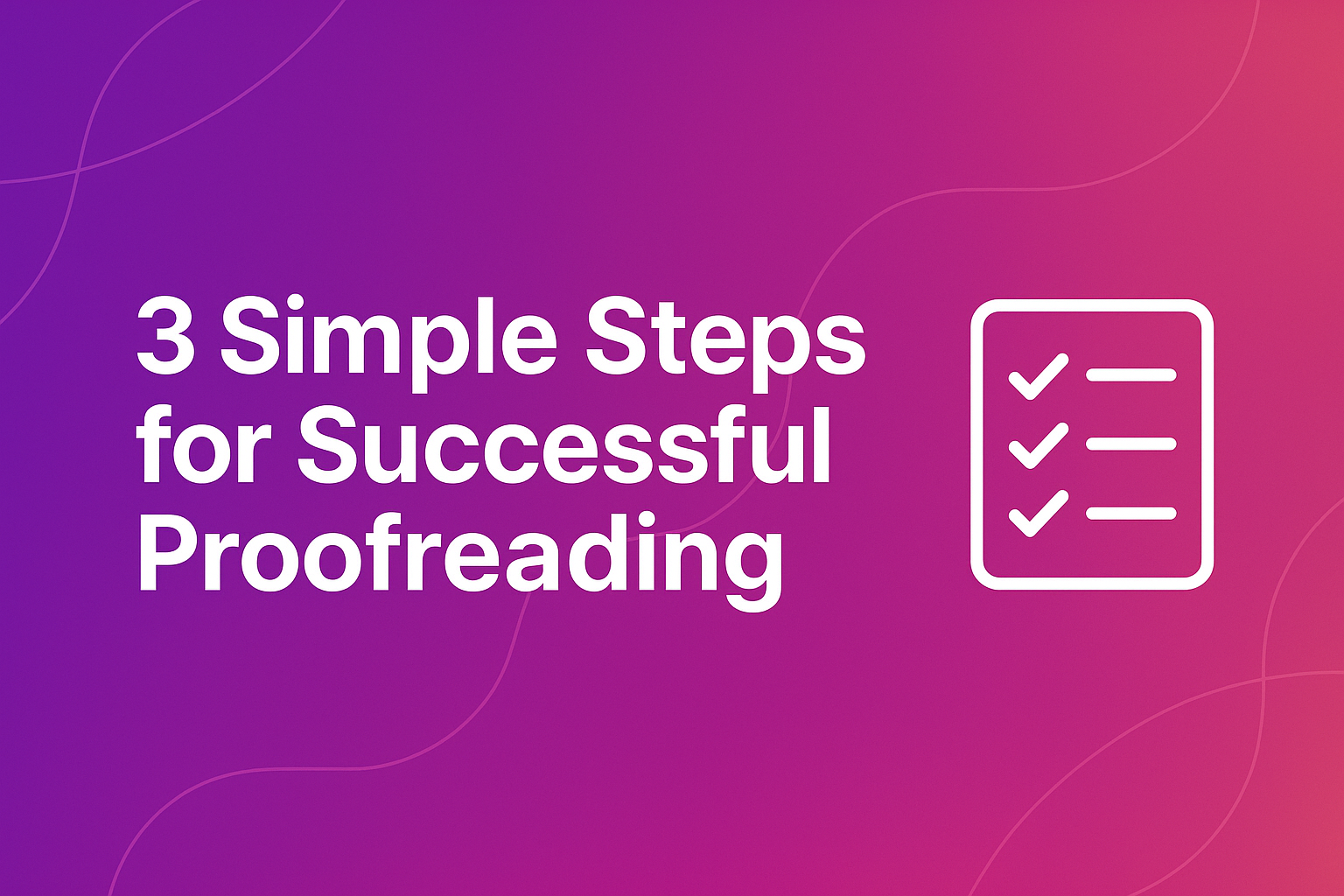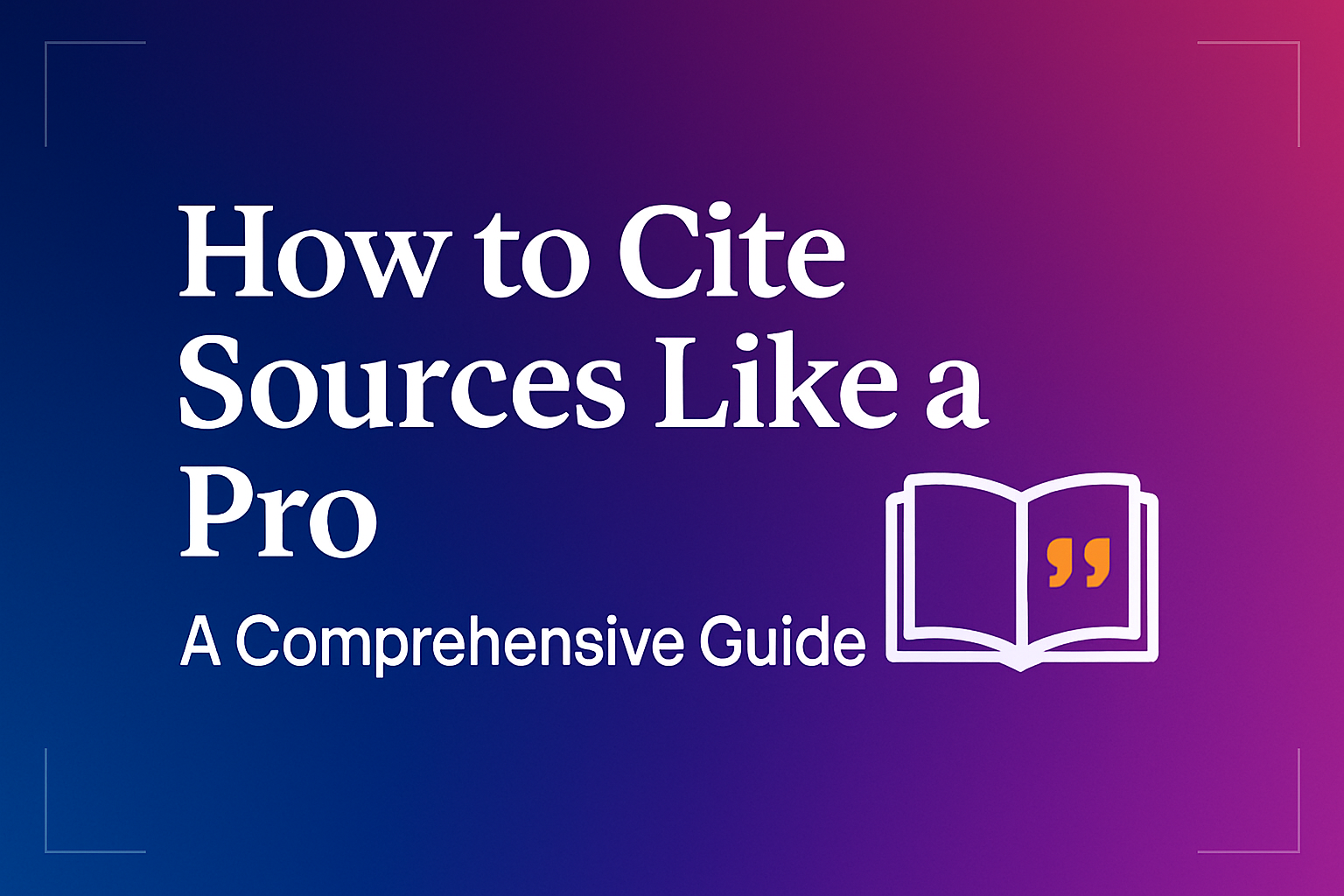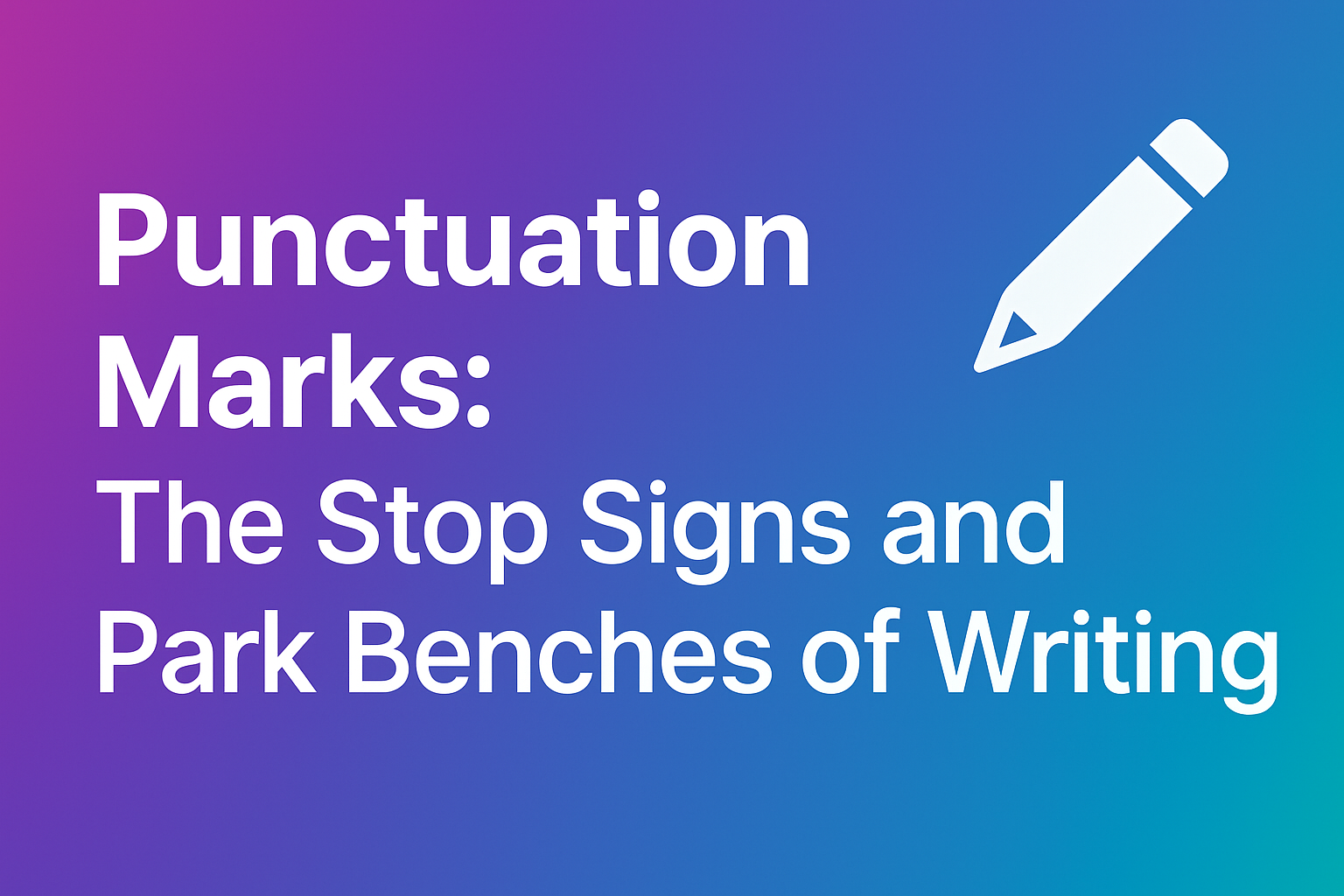
3 Simple Steps for Successful Proofreading
Master the art of proofreading with these three essential steps that will help you catch errors and polish your text to perfection.
Read articleCheck your papers for plagiarism with our advanced AI tools


Proper citation is the backbone of credible academic and professional writing. It's how we give credit to the intellectual work of others, avoid plagiarism, and build a foundation for our own contributions to knowledge. Yet, many writers struggle with the technical aspects of citation, unsure of how to properly acknowledge their sources in various formats. This comprehensive guide will take you through everything you need to know to cite sources like a professional.
Before diving into the mechanics of citation, let's understand why it's so important:
Proper citation is fundamentally about ethical writing practices:
Beyond ethics, good citation practices offer several benefits:
As Louis Pasteur once said, "Science knows no country, because knowledge belongs to humanity, and is the torch which illuminates the world." Proper citation helps keep that torch passing from hand to hand.
The major citation styles each have their own formats, which can seem overwhelming. Here's a breakdown of the most common styles and when to use them:
Used primarily in: Social sciences, education, business
In-text citation example: (Smith, 2020, p. 45)
Reference list example:
Smith, J. (2020). The impact of climate change on coastal ecosystems.
Environmental Science Review, 34(2), 42-58.
https://doi.org/10.1234/esr.2020.02.003
Key features:
Used primarily in: Humanities, literature, arts, language studies
In-text citation example: (Smith 45)
Works Cited example:
Smith, Jane. "The Impact of Climate Change on Coastal Ecosystems."
Environmental Science Review, vol. 34, no. 2, 2020, pp. 42-58.
doi:10.1234/esr.2020.02.003.
Key features:
Used primarily in: History, some humanities, versatile for many disciplines
Features two main systems:
Notes-Bibliography System
Footnote example:
1. Jane Smith, "The Impact of Climate Change on Coastal Ecosystems,"
Environmental Science Review 34, no. 2 (2020): 45.
Bibliography example:
Smith, Jane. "The Impact of Climate Change on Coastal Ecosystems."
Environmental Science Review 34, no. 2 (2020): 42-58.
Author-Date System
In-text citation example: (Smith 2020, 45)
Reference list example:
Smith, Jane. 2020. "The Impact of Climate Change on Coastal Ecosystems."
Environmental Science Review 34(2): 42-58.
Key features:
Used primarily in: Engineering, computer science, technical fields
In-text citation example: [1]
Reference list example:
[1] J. Smith, "The impact of climate change on coastal ecosystems,"
Environmental Science Review, vol. 34, no. 2, pp. 42-58, 2020.
Key features:
Used primarily in: Natural and physical sciences
Features three documentation systems:
Key features:
Each source type requires specific information and formatting. Here's how to handle various sources across the major styles:
Essential elements:
Example in APA:
Garcia, M. (2019). Environmental justice in urban planning.
University Press.
Essential elements:
Example in MLA:
Johnson, Robert, and Mary Williams. "Climate Adaptation Strategies
in Agriculture." Journal of Sustainable Farming, vol. 12, no. 3,
2021, pp. 45-62. doi:10.1234/jsf.2021.03.005.
Essential elements:
Example in Chicago:
Smith, Jane. "How to Reduce Your Carbon Footprint." Environmental
Action Network. Last modified May 15, 2021.
https://www.environmentalactionnetwork.org/carbon-footprint.
Essential elements:
Example in APA:
National Geographic (@NatGeo). "Scientists discover new species
of deep-sea coral off the coast of New Zealand." Twitter,
June 8, 2022. https://twitter.com/NatGeo/status/1234567890.
Essential elements:
Example in MLA:
United States Environmental Protection Agency. "National Water
Quality Inventory: Report to Congress." EPA 841-R-16-011.
2016. www.epa.gov/waterdata/national-water-quality-inventory-report-congress.
Essential elements:
Example in APA: These are typically only cited in-text and not in the reference list:
(J. Smith, personal communication, March 15, 2022)
Essential elements:
Example in Chicago:
Khan, Salman. "Introduction to the Pythagorean Theorem." Khan Academy video,
9:30. Posted April 2018. https://www.khanacademy.org/math/geometry/pythagoras.
Even experienced writers make citation errors. Here are the most common mistakes and how to avoid them:
Problem: Mixing elements from different citation styles (e.g., using APA in-text citations with MLA Works Cited format).
Solution:
Problem: Missing essential elements like page numbers, issue numbers, or DOIs.
Solution:
Problem: Errors in punctuation, italicization, or ordering of elements.
Solution:
Problem: Citing a secondary source when you should cite the primary source, or vice versa.
Solution:
Problem: Citing too frequently (citing obvious facts) or too infrequently (not citing ideas that require attribution).
Solution:
Avoid these serious citation errors:
Citation tools can save time and reduce errors, but they must be used properly:
Zotero
Mendeley
EndNote
Citation features in Word/Google Docs
Some citation scenarios require special handling:
Different styles handle multiple authors differently:
APA:
MLA:
When citing multiple works by the same author:
APA: Add letters to publication years (Smith, 2020a, 2020b)
MLA: Include abbreviated titles (Smith, "Climate" 23; Smith, "Ecosystems" 45)
When citing a source you found quoted in another source:
APA: (Johnson, as cited in Smith, 2020, p. 45)
MLA: (qtd. in Smith 45)
Always try to find and cite the original source when possible.
For sources without identified authors:
APA: Use title in place of author ("Climate Change Report," 2020)
MLA: Use shortened title ("Climate Change" 23)
For sources without publication dates:
APA: (Smith, n.d.)
MLA: No special notation needed as MLA emphasizes page numbers over dates
Include both the original and translation/republication information:
APA:
Piaget, J. (2001). The psychology of intelligence. (M. Piercy & D. E. Berlyne, Trans.).
Routledge. (Original work published 1950)
In-text: (Piaget, 1950/2001)
Citation expectations vary across different writing contexts:
An annotated bibliography includes citations plus summaries or evaluations of sources:
Smith, J. (2020). The impact of climate change on coastal ecosystems.
Environmental Science Review, 34(2), 42-58.
https://doi.org/10.1234/esr.2020.02.003
This article presents a comprehensive analysis of how rising sea levels
and ocean temperatures affect biodiversity in coastal wetlands. Smith
synthesizes ten years of field data from the Gulf Coast region and identifies
three key ecosystem changes. As a peer-reviewed article by a leading
researcher in marine ecology, this source provides reliable scientific
evidence directly relevant to my research on environmental policy for
coastal protection.
Citation practices continue to evolve with changing technologies and scholarly needs:
DOIs provide permanent identification for digital objects, making citation more stable even when URLs change.
New media formats require ongoing adaptation of citation styles:
New technologies are emerging to automatically detect and suggest citations for statements in academic writing.
Proper citation is more than a technical requirement—it's how you join the scholarly conversation. By citing sources properly, you:
The renowned sociologist Robert K. Merton noted that "the communism of the scientific ethos" means that intellectual contributions become part of the shared knowledge base. Citation is how we acknowledge that our work stands on the shoulders of others.
Think of citation not as a chore but as a way of mapping intellectual relationships—showing how ideas connect, evolve, and build upon one another across time. When you cite sources like a pro, you demonstrate not just technical mastery but intellectual engagement with the broader community of thinkers and researchers in your field.
By mastering the art and science of citation, you ensure that your contributions can be properly contextualized within the ever-growing body of human knowledge.

Master the art of proofreading with these three essential steps that will help you catch errors and polish your text to perfection.
Read article
Discover how proper punctuation serves as the essential traffic signals of written communication, guiding readers through your ideas with clarity and precision.
Read article
Learn the clear distinction between 'then' and 'than' with practical examples and memory techniques that will help you use these commonly confused words correctly every time.
Read article